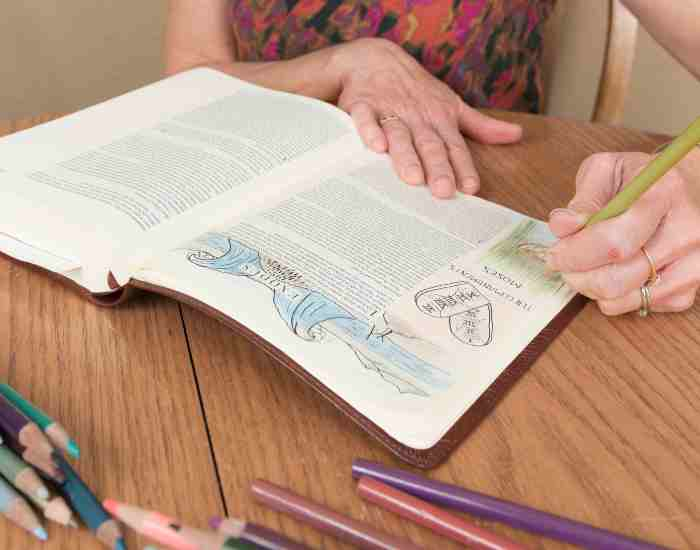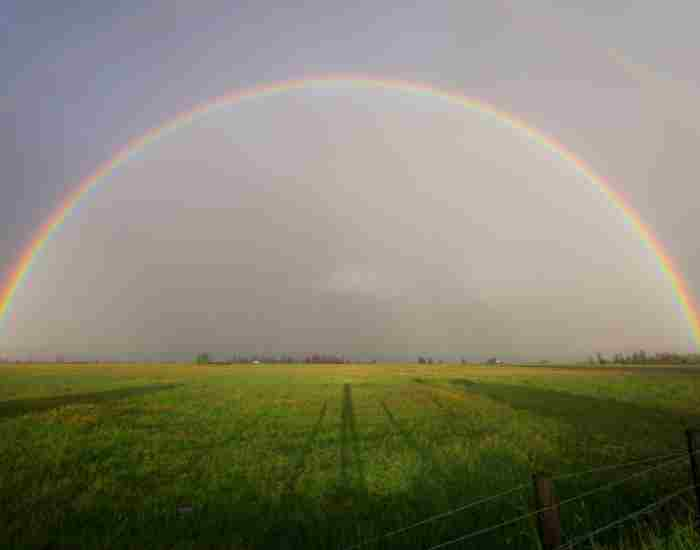Picture this: A well known celebrity ever steps onto the red carpet, all eyes are on them. However, this is not only due to their popularity but their remarkable change. This is what stylists do – a crucial moment where one’s personal style blends together with the fashion of the respective era resulting in a look that is the talk of the town the net day. Such scenarios are quite common in the life of a stylist because a good stylist can singlehandedly change a person’s persona and ring alarms in the fashion world’s business.

The Role of a Stylist Explained
To give a resume of a stylist’s role, we would say that they are a mixture of creativity, market analysis and customer focus. They are the directors who articulate personal impressions as well as make sense against the larger framework of the fashion in which their customers appear. Such stylists emphasize wardrobe consulting, personal styling and custom mood board design just so that a wore look is one of a kind. Their realm extends beyond just picking clothes as they build a story which is an image in itself.
Stylists have a significant impact over the course of fashion trends and personal style marketing. In addition, they are styled influencers as they can modify how an individual is seen in the public domain. Not only do trends in the general personal appearance styles transform, but in the style itself which subsequently becomes a trend throughout the fashion world. The spotlight can turn in any direction and the first person it casts light on is a stylish celebrity and that’s how trends gain momentum thus stylists are vital for the fashion industry.
What is the job description of a stylist? Understanding the duties.
Daily Activities
A Stylist’s Work revolves around a certain task or an activity and that is to make an idea or concept in their mind come into reality. They help clients to visually express themselves in the best way possible, connectors for eyes and fashion. From analyzing the clothes which fit and which don’t, going back in the shop/find something that ties into the style and the body of the client or even looking for something brand new, usually takes a lot of time. Consulting the client’s ideas is also a part of it and developing it personally as well.
It is not just a job of agreeing with the clients and going through the shops. It helps them in a way, clients themselves use mood boards. Aiming to covey an idea, mood and direction to how the client wants to look the mood board style tries to curate the look using famous items or something from trend. Ultimately, to make sure every get-together, each outfit portrays a unique style to each client catering to the occasion of their choice.
Inspirational Dior and Me quotes in real life: successful stylists
Many people only know designers like Rachel Zoe or Law Roach. What they do goes beyond dressing people, it boosts the confidence of many clients who were awarded the services. For instance, Zendaya has become a fashion icon because of her stylist Roach – keep in mind her outfits were not ordinary, either. The role of the stylists can truly be understood only when a person sees how good or bad a car is after a detailed physical feature design. It can change a person’s life.
The days of these stylists are full of sweat and hard work, right from early morning fittings through late-night styling. However, the delight comes with watching the clients beam with confidence and elegance, knowing that they have assisted in building that image. It speaks volumes of the stylist in the sense that she is not just an expert in fashion but a therapist and an artist who paints her clients with every best part of them.
A look at the unseen
In the sparkling space of the fashion industry, the stylist is an equally vital member of the team though always working from behind the velvet drapes and curtains. Their task may not only be about selecting outfits. It is more of building castles out of the fabric of dreams. This section takes off the layers that make the less seen yet important elements of a stylist’s profession.
Staying Up to Date with Cutting Edge Trends
Every industry has its own set of practitioners that are regarded as prophetic visionaries. In the fashion industry, stylists belong to this elite class. This ability to foresee the future however does not arise out of thin air. A crystal ball is not the answer and rigorous data analysis and research is the way forward. Take for example, a report from the Fashion Institute of Technology which demonstrates the use of fashion history data, catwalks and even present day events to predict future trends. Observing fashion weeks from Paris to New York allows stylists to anticipate the probable colors and designs that will familiarize in the next season. Such an extensive study is critical since it helps these clients remain stylish, as repeating trends that define the times is what’s always in fashion.
Building Connections in the Fashion World
Being a stylist almost certainly entails one constant: strong relationships in the industry. Building and sustaining a robust contact network among the fashion world, including design, photography, magazine editing, and make up artists, is a must. These networks do not just serve as collaboration channels, but serve as critical pointers for important developments in the industry such as when new trends will emerge. Take for instance a stylist who has connections with a designer, he or she will be the first to see the collection before the rest and this would allow them to blend in with the latest trends.
Managing Budgets
Budget management revolves around the collaboration between both the stylist and their client. It is a key point for the two when they come to an agreement and the stylist is provided with either a $1000 or $100,000 wardrobe. The expectation remains that they don’t compromise on the style that the client is looking for, instead they need to find a way to cut back on spending by outsourcing more affordable options . For example, a personal stylist will devote 30% of the budget for key items, 20% for top tier items, and the rest for many seasonal pieces so he or she can carry out his or responsibilities. Supporting their clients in the process of honing in on their own distinct style that is filled with character will be much easier.
Collaborating with Makeup Artists
While aiming for a particular vision finding the perfect outfit as a stylist feels lacking. It is in this moment that one has to search for a supporting outfit that includes hair and makeup. Understanding the impact that this will have on the outfit the stylist has the opportunity to work in collaboration with a diverse range of artists. This is the reason why in most cases a makeup artist is present. They tune in to the vision that the stylist has and tries to emulate it through the cosmetics that he uses. This is commonly seen in the fashion editorial or the red carpet, where the overall makeup and outfit have to impeccably correlate in unison.
Specialization in Styling
Here’s how you can understand the wide area of styling. Let’s check the different aspects and areas of expertise within the profession outlining different kinds of stylists. It goes without saying that each type of stylist has their own abilities and a specific goal they aim towards achieving.
Fashion Stylist
A fashion stylist is probably the definition of styling for majority. They tend to focus on making outfits for fashion events like photoshoots and runway shows for the clothing designers. For example, Rachel Zoe, a fashion stylist, has styled several celebrities into fashion icons for red carpet appearances.
Wardrobe Stylist
Wardrobe stylists make the clients’ clothes after understanding how they live, their preferences, and what body type they have. They are able to balance practicality and style. There is a case where one of the storied clients of a stylist lost her gorgeous wardrobe, crafted to pair classic items that made different outfits, proving that classic wardrobes can be stylish and fashionable.
Personal Stylist
A personal stylist works in an interactive environment, assisting an individual intending to create or intending to redefine their character and image by tailoring personal items of clothing as well as hairstyles or cosmetics. This goes beyond merely dressing, considering hair and makeup for perfecting an integrated and cohesive image. Personal stylists can utilize color to polish the clients natural features to turn them into ‘supernatural’ aids in the normal process of dressing up.
Food Stylist
If you are familiar with the art of food styling, it is presented as a unique strength. Food stylists arrange food to create beautiful pictures aimed at advertisements, film and substance production. It is a job that combines art and food science as it requires the stylists to know how to handle and combine the food’s physical characteristics. For example, food stylists in the past would sometimes dip a freeze spray in the beverages and expose it to pitchlights so that cameras capture an illusion of cold drizzling on the on a drink, reflecting the work in these industries.
The Skills and Tools of the Trade
Essential skills for success
When talking about fashion styling, not just everyone can make the cut. There is a distinction and for aspiring stylists and those who possess immense talent. Having the fundamental skills of a stylist will not only increase their performance but also increase their ranking and reputation in the world of fashion.
Eye for Detail
Attention to detail is utmost of importance to the stylist or pretty much anyone working in the fashion industry. This includes observing the fabric, colors, and shapes of the drawings. An ensemble can only look classy if stylists are able to understand the finer details about it. For example, even the addition of one accessory, at the correct place, can give an bland look an eye-catching effect.
Grasping Fashion
It is vital to have an intimate knowledge of all existing and upcoming fashion trends. Continuous work of this fashion includes research papers, fashion shows, mag fashion and also the various social sites. For instance, statistics from the London Fashion School show that stylists, who consume fashion content actively, are able to forecast the lifecycle of a particular trend 75% better.
Client-Related Issues
Great customer-service skills are mandatory. A stylist has to deal with a client’s preferences and stereotypes regarding her body also not forgetting the actual money available for the service. Personal Stylist Association put out a survey that states 90% of clients believe a communication skill is the most important characteristic in a stylist.
Fashion Sense
A stylist’s mark is being able to make style calls. This is being able to think fashionably ahead but still factor in the client’s style as well as level of comfort. For example, if a stylist has a client who is more than willing to forget about wearing what she is accustomed to, and go for a high risk item, that would make a lot of change.
Building Styling Skills in The Mind
- Enroll For Fashion & Styling Courses: Institutes such as the Sterling Style Academy offer courses from color definition to client functioning training.
- Start Working: Working experience is vital: It could be an internship, assist in personal shopping, or volunteering for styling activities. This actually handles exposures to clients and styling tasks.
- Stay Updated: Watching fashion and styling shows, or interacting with fellow stylists on social media like Instagram can help in learning something new due to exposure to other artists.
Stylist Kit
Art and creativity have no boundaries or limitations, however they can be aided by a vast assortment of tools and digital gadgets, the combination of which is called stylist’s kit.
Tools That Will Help You Measure the Fabric Correctly And Style To Therefore Only Create Perfect Pieces
- Tape Measure: A commonly used item that aids in garment construction, and that is taking the size of one’s body for accurate fitting.
- Fabric Swatches: An equally important collection, fabric swatches to show how materials can fall onto a body whilst having a different feel.
- Styling Kit: Other styling tools that come in a kit include dress pins, double-sided tape, lint roll, and scissors for some minor amendments.
Digital Tools
- Mood Board Software: Mood board aides like Canva and Pinterest are a valuable visual aids that allow communicating particular fashion ideas to clients or other partners, instead of pitching ideas through long texts.
- Fashion Styling Apps: Stylebook, Closetspace and other similar apps can assist stylists with their clients’ wardrobes virtually by helping them plan together outfits for particular events in advance and also the ‘When’s’ to the wearing of the outfits.
- Project Management Tools: Other applications such as Trello or Asana help in overseeing styling project activities, schedules and other related work with other people in the industry.
Organizational skills and time management
When working with several clients and managing several projects at a time, effective time management and organizational skills are critical. Most stylists make use of calendar apps and scheduling tools for keeping track of meetings, fittings, and other deadlines. According to the Retail Academy project managers who have instigated management software are 30% more productive.
Transformations: before & after
The magic of a stylist is best illustrated through before and after shots. Such pictures not only show the artistry of the stylist but also tell how fashion styling as a form of art and self imitation can augment the individual’s level of confidence.
Case Studies of Transformation
The Corporate Executive: The issue that stands out is that of a corporate executive who desired a makeover for updating their corporate outlook, making it more approachable but retaining an authoritative note. Pretransformation, the client’s wardrobe was rather bland and had no individual flair to it. Thanks to a well known stylist, the client was able to dress up in working women’s suits, yet with some gentle and elegant cutting so that formalities met with a little of modern trends. The transformation increased the clients confidence level which resulted in improvement of a great deal in the clients professional relations.
The Stay-at-Home Parent: Yet another memorable transformation was that of a stay-at-home parent who was gearing up to start a career. The challenge was to change a relaxed and home oriented wardrobe to a multi-purpose working one. The emphasis of the stylist was on providing a basic range of clothing suitable for many offices which allowed a client to be innovative thus achieving a fantastic transformation that enhanced his/her confidence for employment interviews.
Testimonials
Clients would regularly tell the great effects these transformations had on their day to day lives. One testimonial highlighted a stylist’s work aside from fashion and that it has changed the way the client viewed herself and the way she interacted with the surrounding. This feeling is affirmed by many who have experienced these transformations through stylists who are said to assist with such transformations for themselves not just their wardrobes.
FAQs
What Qualifications Do You Need to Be a Stylist?
There is no specific course that one needs to undertake in order to become a stylist, but it is very helpful for students to complete courses in fashion and design, textile sciences, and fashion marketing. Gaining exposure through internships at fashion companies or retail shops also helps. Winning a certificate from renowned institutions such as Sterling Style Academy also enhances the profile of a stylist.
How Much Do Stylists Charge Per Hour?
Depending on their expertise, manners, and the job at hand, stylists charge anywhere from $50 to $500 hourly. A package deal of multiple services, a full package restyle, recharge, and reset might cost anywhere from $1,000 to a few thousands of dollars depending on the size and stylists amount offered.
Are There Any Restrictions On Who Can Be A Stylist?
Yes. Albeit, a keen sense of fashion and interpersonal skills that are irreplaceable and a deep understanding of the client’s requirements are very crucial for a stylist. Fashion fuels them but the driving force that pushes them to do so is staying modernized regularly.
Do you want to know how different a Fashion Stylist is as compared to a Fashion Designer?
A stylist takes existing articles of clothing and accessories and puts together a complete head-to-toe look typically for a clientele or for an occasion. A fashion designer, on the other hand, deals with the development of ideas and the original creation of the clothing and accessories. Surely both of these roles have their differences but both require adequate knowledge in fashion.
Conclusion
Stylists are able to literally change the way a person looks and more importantly, the way a person feels about themselves. What he or she does is a demonstration of how personal style can make a difference in someone’s self-confidence and personal expression. The importance of stylists in regard with the fashion world and with people’s personal lives is considerable — they are the creators of self-image and positively affect how we are viewed and how we perceive ourselves.
For many interested in the art of transformation and fashion, the career of a stylist involves the combination of creativity, fashion, and significantly impacting the people’s lives. Stylists with ambition should submerge themselves completely in the sphere of fashion, look for educational possibilities, and create a portfolio that would represent their great imagination and skills. The career of a stylist is full of learning experiences, creative opportunities, and lots of influence – a career worth pursuing for someone who loves fashion and wishes to change the world a clothing item at a time.
More Post





